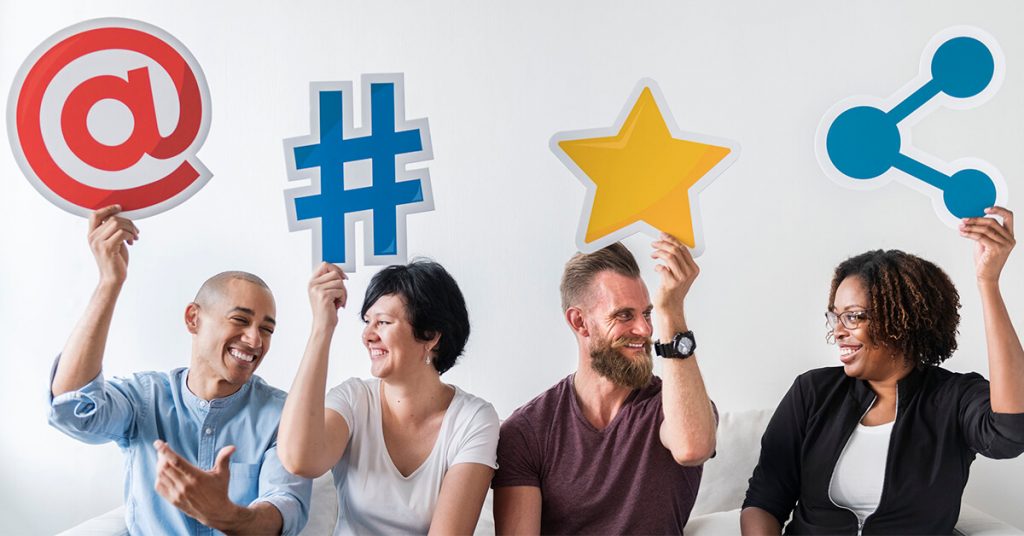No one can deny the enormous benefits brought by digital communication. However, being able to communicate with people without actually seeing or hearing them has downsides too. We lose the social cues offered by nonverbal communication.

We might not always be aware of it, but body language makes up about 55% of communication. From facial expressions such as a raised eyebrow, to the direction your foot is pointing while being involved in a dialogue, everything can be a cue that might indicate to the other person how we feel at that exact moment.
Another 38% of communication is expressed through the tone of our voice, and only 7% through words. This means that digital communication, while fast and convenient, lacks 93% of the signals transmitted through face-to-face communication.
Digital nonverbal communication
Even though digital communication is mostly typing down words, there are still some nonverbal components that add context and give out social cues. Let’s dive in and see what those are and how you can use them to communicate more effectively in a digital world.
Emoticons
Originating in the early 1980s, emoticons added a new dimension to digital communication. From the simple smiley and sad faces to frowning, raising eyebrows, laughing, or crying, emojis cover a wide range of human emotions, successfully substituting human facial expressions.
Just as in face-to-face situations, more expressive people use emoticons more frequently than less expressive people. Also, women use more emoticons than men, and interestingly enough, the significance of emoticons varies by culture. If for most Americans and Europeans 🙂 indicates a smiley face, for Japanese people that would be a ^_^
Emoticons are such a valuable form of nonverbal communication that different teams of neuroscientists have studied the reactions they trigger in the human brain. All studies came to pretty much the same conclusion: emoticons triggered strong activity in the brain area connected to processing emotions, even though they would trigger no response in the brain area connected to recognizing human faces. In other words, people are able to read the emotions conveyed by emoticons while being aware of the fact that they do not represent real human faces.
Most powerful recognition of the emoticons importance was Facebook’s decision to add several expressions to their Like button. Instead of simple and straightforward Like and Dislike buttons, we can select from a range of emotions the one closer to what the content makes us feel. Happy, surprised, sad or angry are all human emotions expressed through an icon that allows everyone else to acknowledge our feelings.
Paralanguage
Paralanguage is the non-lexical component of spoken communication. It includes intonation, voice pitch and speed, gestures, hesitation noises, etc. Even though all these seem to be lacking for written communication, things aren’t exactly like that. *gasps*
A team of scientists from the University of Wisconsin analyzed data from Twitter, Facebook and Instagram to observe the implications of textual paralanguage in marketing communications. They found that social media communication is actually abundant with paralanguage. 😀
People are translating into writing pretty much all the components of paralanguage, be it auditory, tactile, or visual. Using orthographic signs, caps, third person speech, or translating noises into text are all tools of paralanguage.
So next time you emphasize something REALLY important using caps, when you are ummm… unsure what to reply, or let others know you ROFL, know that you are using paralanguage. *facepalm*
GIFs
Every person with a Facebook account has most likely been involved into at least one GIF dialogue. You know how that works – your friend adds a GIF, you use a search term and choose the animated image that is closer to your feelings, they reply with another one and so on until one of you gives up.
GIFs (also called ‘reaction GIFs’ or ‘animgifs’) are so popular that about two thirds of social media users know of or use them on a daily basis. Even online publications use GIFs in their articles, especially when the subject has a strong visual component – such as movies or sports.
Using GIFs in digital communication basically replaces the use of words altogether. You don’t need a full sentence to express a thought or an emotion when a simple GIF can do the job for you in an even funnier way. For that reason, GIFs deserve their place among the tools of digital nonverbal communication.
Nonverbal communication at work
While involved into casual chats with friends, most people will use paralanguage, emoticons, and GIFs, in formal communication these might seem inappropriate. You won’t reply to an email from your boss using a gif or a thumbs up emoji. When you get a text from your team leader asking you to make some changes you don’t really like, you probably won’t reply mmkay *eyeroll*...
That doesn’t mean that nonverbal communication is totally lost in work-related digital conversations. As more and more companies add new team communication solutions on top of good old email, dialogue becomes more open and friendly. For example Hubgets allows you to create topics that can be kept serious and professional and topics that are meant for casual team conversations.

The latter is the perfect occasion to put those nonverbal communication skills to good use.
This is just the beginning
As we can see, nonverbal communication is adapting to the technological evolution. In this day and age, we are able to reconstruct most oral communication into writing. Even though not exactly the same, people are able to pick up on nonverbal cues and understand emotions, thoughts and feelings expressed by others without the need of words.
Therefore, nonverbal communication is not getting lost in a digital world, it has simply adapted and is evolving with it.
Post A Reply